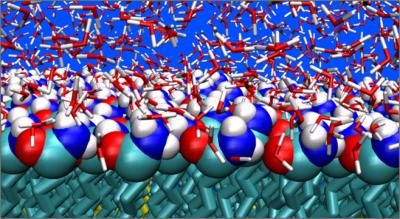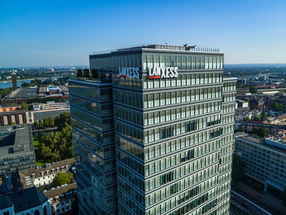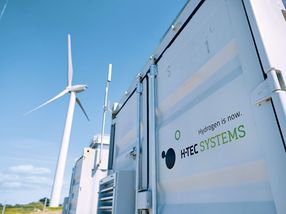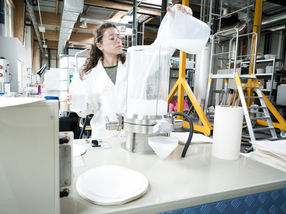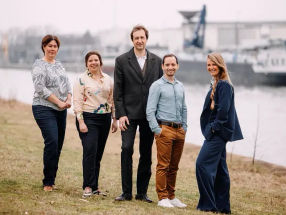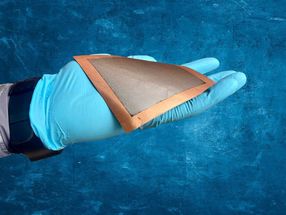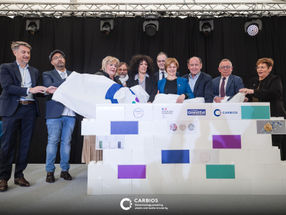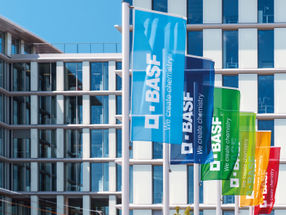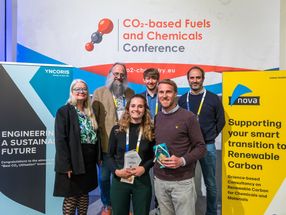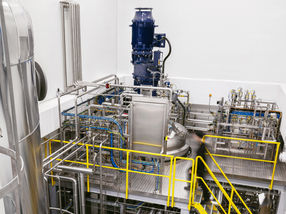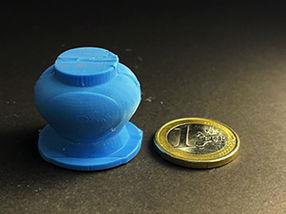Eastman and Geocell Sign Exclusive Copolyester Supply Agreement
KINGSPORT, Tenn., Aug. 30, 2002 - Eastman Chemical Company today announced it has signed an agreement with Geocell Systems, Inc., to be the exclusive supplier of copolyester materials used in Geocell's Rapid Deployment Flood Wall (RDFW) grid. RDFW is a new and revolutionary fortification technology that can replace the outdated task of filling and stacking sandbags. In addition to flood control, the technology also has applications for military force protection and homeland security.
Federal, state and local elected officials, as well as community leaders and representatives of emergency management agencies, attended a demonstration of the RDFW at Eastman's Kingsport, Tenn., site earlier this week. They got a firsthand look at why this new technology is a faster, less expensive and less labor intensive alternative to sandbags. The RDFW is an expandable, stackable, modular wall made of a tough, lightweight, environmentally responsible plastic that can be filled with sand or other locally available fill material for use in a number of disaster emergency and military protection applications.
Eastman Specialty Plastics, a business unit of Eastman, developed the advanced plastic materials needed for this revolutionary technology and partnered with Geocell Systems Inc. and Spartech Corporation, a plastics extruder, to develop the RDFW. "This is an innovative use of Eastman products that could save lives and prevent the needless destruction of property from flooding and also can be used strategically for security purposes," said Brian Ferguson, Eastman's chairman and CEO. "While we're working closely with Geocell to establish this technology in the United States, we're very excited about its potential globally, especially as a flood-fighting tool."
Filled with sand or other locally available fill material, the RDFW can be constructed in one-twentieth the time, using only one-fifth the labor, of a comparable sandbag wall. With RDFW, a crew of six people and one loader operator can construct a fortification wall 100 feet long, four feet wide and four feet high in just one hour. An equivalent sandbag wall requires 35 laborers over 19 hours to construct.
"Until now, there has been no other choice but to use sandbags for flooding emergencies and rapid force protection needs," said Al Arellanes, president of Geocell Systems. "In developing a new flood fighting concept, we experimented with various plastic materials until we discovered a specialty plastic produced by Eastman that met our criteria for a material that was clear, tough, flexible and environmentally responsible. As a result, we now have a much more efficient means for expedient flood fighting and force protection needs that could save millions of dollars, countless hours and untold heartache in the future."
Like sandbags, RDFW is a flexible tool with multiple applications. From a military standpoint, RDFW's speed can be used to rapidly establish blocking positions, forward operating points and fire support bases. Originally designed and Army-tested for bomb blast protection, RDFW can serve as a direct replacement for sandbags in a wide variety of field fortifications, including standoff blast protection, artillery emplacement shelters, bunker wall construction and vehicular barriers.
RDFW also is ideal for both diversion and containment of water or other liquids. It is more cost efficient than sandbags, and because it is reusable, RDFW becomes dramatically more competitive after its first use. In its first use, RDFW is about 90 percent of the cost of sandbag walls when employing volunteer labor and about one-third of the cost when reused. In addition, sandbags only last about 30 days, can become contaminated and usually require costly disposal at designated landfills. The sand or other fill material can be stockpiled or reused as needed for other projects, and RDFW segments collapse for easy storage and reuse.
RDFW is the result of a cooperative research and development agreement between Geocell Systems and the U.S. Army Corps of Engineers. The Corps' Engineering Research and Development Center in Vicksburg, Miss., conducted extensive flood protection analysis that resulted in successful testing of Geocell's RDFW to hold 40 inches of static water and withstand wave action equal to that which would be experienced during the most severe flood emergencies.
Most read news
Topics
Organizations
Other news from the department business & finance

Get the chemical industry in your inbox
From now on, don't miss a thing: Our newsletter for the chemical industry, analytics, lab technology and process engineering brings you up to date every Tuesday and Thursday. The latest industry news, product highlights and innovations - compact and easy to understand in your inbox. Researched by us so you don't have to.

